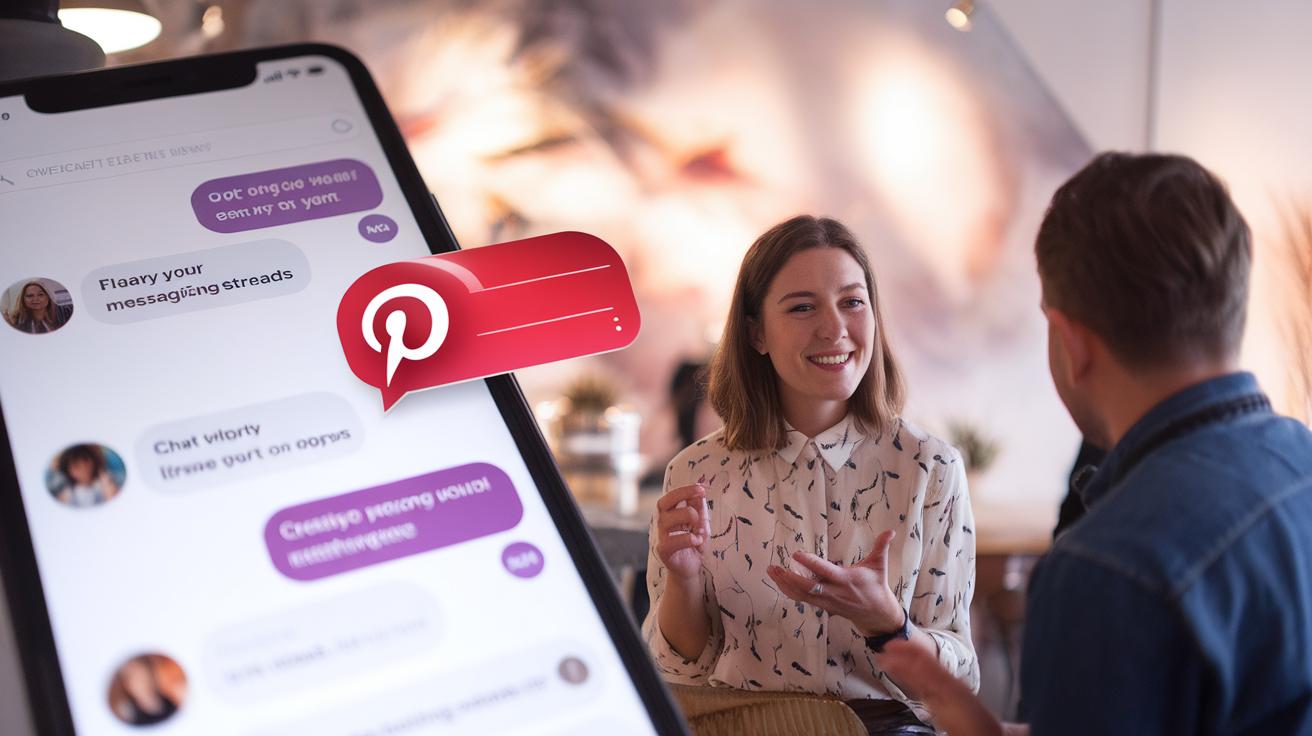Introduction
Pinterest has emerged as a powerful platform for businesses seeking to enhance their online presence and drive conversions. As a visual discovery tool, Pinterest allows users to share and discover new interests through images and links. However, leveraging Pinterest effectively goes beyond just posting beautiful images; it requires strategic planning and a thorough understanding of how to engage users effectively. In this article, we will delve into various strategies tailored to improve Pinterest conversions and integrate them with website chat widgets for maximum user interaction.
This article will explore the essential elements of Pinterest marketing and the role of live chat widgets as an engaging feature for websites. Combining visually driven content with proactive customer engagement can significantly influence conversion rates, leading to increased sales and brand loyalty. By the end of this article, readers will have a comprehensive understanding of how to utilize Pinterest in synergy with chat widgets to optimize their business strategies effectively.
Understanding Pinterest and Its Features
Pinterest emerged in 2010 as a unique social media platform that evolved into a visual discovery engine. Founded by Ben Silbermann, Paul Sciarra, and Evan Sharp, the platform was initially designed as a virtual pinboard where users could gather and share images that inspired them. Over the years, Pinterest has transformed from a niche site primarily used by DIY enthusiasts and hobbyists into a critical marketing tool for many businesses, leveraging its growing user base of over 450 million monthly active users.
One of the standout features that distinguish Pinterest from other social media platforms is its emphasis on visuals. Pins, which can be images, videos, or product listings, serve as visual bookmarks that lead users to discover new content. This characteristic positions Pinterest as a hybrid between social media and search engine, enabling users to explore ideas actively rather than passively scrolling through a news feed. Users create boards that categorize their interests, making it simpler for marketers to target specific demographics by aligning content with particular themes.
The search capabilities on Pinterest are another notable feature. The platform employs visual search technology, allowing users to search for images using an uploaded image or by clicking on elements within a pin. This presents a unique opportunity for businesses to enhance their visibility; by optimizing images for search, brands can improve the chances of their content being discovered organically. Businesses can utilize keywords strategically in pin descriptions and titles to enhance their searchability.
Call-to-action buttons and rich pins are additional features that bolster Pinterest’s marketing capabilities. Rich pins provide more context about an idea, serving additional information, such as real-time pricing, availability, and product details for e-commerce businesses. This depth of information can drive higher engagement and may lead to increased conversions, particularly when paired with a well-implemented website chat widget that caters to potential customer inquiries.
Utilizing Pinterest for marketing requires a strategic understanding of these features. Marketers should focus on creating visually appealing, high-quality images that adhere to the specifications recommended by Pinterest. Comprehending user behavior on the platform, such as peak engagement times and seasonal trends, can also inform effective marketing strategies. By harnessing the unique attributes of Pinterest, brands can enhance engagement and significantly boost conversions, driving free website chat widget success.
Creating Captivating Content for Pinterest The Role of HighQuality Visually Appealing Material
Importance of Visual Appeal
High-quality, visually appealing content is the heartbeat of Pinterest. Users flock to this platform primarily for inspiration, making it imperative for brands to create images that stand out. The visual nature of Pinterest means that your content must not only capture attention but also resonate with the audience’s needs and tastes. Pins that are aesthetically pleasing are more likely to be saved and shared, ultimately driving organic traffic to your website.
When designing images for Pinterest, consider the overall aesthetic of your content. Images should convey your brand’s style while still being engaging and dynamic. Bright colors and crisp visuals often work best, as they attract users scrolling through a busy feed. Additionally, ensure that your images are vertical, respecting the 2:3 aspect ratio, which is optimized for Pinterest and tends to perform better than other formats.
Crafting Compelling Descriptions
The image might grab attention, but a well-crafted description can convert that attention into action. Descriptions should complement your visuals by providing context and enticing viewers to click through. Use clear, engaging language that tells a story or highlights a unique selling proposition (USP). Incorporating relevant keywords naturally into your descriptions can also enhance discoverability via Pinterest’s search engine. Aim for a balance between SEO practices and engaging prose to ensure your content reaches and resonates with the right audience.
Incorporating a call to action (CTA) is crucial. Phrases like “Discover more” or “Shop now” can effectively guide users towards the next step. A well-placed CTA can direct traffic towards your website chat widget, enhancing conversion rates by inviting users to engage with your brand in real-time.
Test and analyze which types of content work best for your audience. Utilize Pinterest Analytics to gauge engagement metrics and refine your approach based on what resonates most with users. Experiment with demographics, pin styles, and timing of posts to find the winning formula that will push your website’s performance to new heights.
Optimizing Pinterest for Conversions Analyzing Methods to Enhance Engagement
Strategies to Optimize Your Profile and Pins
When leveraging Pinterest for conversions, a well-optimized profile and engaging pins are paramount. Success hinges on the strategic application of elements like compelling calls-to-action (CTAs), effective link strategies, and comprehensive profile optimization. Each of these components plays a crucial role in driving traffic and encouraging user interaction, thereby enhancing the likelihood of conversion.
The first step in profile optimization is ensuring that your Pinterest account is complete and aesthetically appealing. Your profile picture should be recognizable, preferably your brand logo or a high-quality image that reflects your business identity. The bio should be concise yet informative, showcasing your unique value proposition while incorporating relevant keywords to improve searchability.
Creating pins that resonate with your target audience is vital. Each pin should have a clear and professional design that maintains brand consistency. Use high-resolution images and thoughtful text overlays, which serve as a compelling CTA. Phrases like “Shop Now,” “Learn More,” or “Get Started” create a sense of urgency and motivate users to explore further. Ensure that CTAs are not only visually prominent but also contextually relevant to the content of the pin.
Developing an effective link strategy involves directing users to well-structured landing pages. These pages should match the expectation set by the pin, creating a seamless transition from interest to action. Utilize trackable links to measure engagement and conversion rates. Understanding which pins yield the highest traffic and conversion can offer insights into user preferences and behaviors, allowing for refined strategy as you adapt to trends and feedback.
Regularly reviewing your Pinterest analytics will help you identify which pins generate the most engagement. Focus on active monitoring of metrics such as saves, clicks, and overall impressions. This analysis not only informs your content strategy but also aids in identifying areas for improvement. By continually optimizing your pins and implementing feedback, you create an agile approach to driving conversions.
Encourage user-generated content by inviting your audience to share their experiences with your products or services. This not only leverages social proof but also enhances community engagement, creating a more interactive experience on your Pinterest profile. Engaging with your audience through comments or sharing user-generated pins fosters a sense of connection and trust, further boosting conversion potential.
Integrating Website Chat Widgets with Pinterest Effective Communication Strategies
Enhancing User Experiences through Real-Time Chat
Integrating website chat widgets with Pinterest can significantly enhance user interaction and foster real-time communication. This integration bridges the gap between passive browsing on Pinterest and active engagement on your website. By encouraging visitors to engage through a chat widget, businesses can provide immediate answers to inquiries, furthering the potential for conversions. Given the visual nature of Pinterest, integrating chat allows brands to match enticing images with direct dialogue, making for a seamless transition from interest to action.
Consider the timing of the chat widget’s appearance. It’s crucial to ensure that users are met with the chat option when they are most engaged, such as after they have spent a certain amount of time on your website or have viewed multiple products. This design approach fosters a sense of readiness to engage, as opposed to overwhelming users with a chat prompt upon entry. By analyzing user engagement metrics from Pinterest, brands can time their chat prompt to coincide with high traffic periods from this platform.
Creating a Cohesive Brand Experience
To further capitalize on Pinterest traffic, it is essential to ensure that the chat widget aligns with your overall Pinterest strategy and brand identity. The design and tone of your chat widget should mirror your Pinterest boards and pins, providing a unified brand experience. This consistency not only reassures users but also encourages them to continue the conversation after viewing your content on Pinterest. Engaging with users about their interests, as expressed through pinned content, can lead to a more personalized interaction that fosters trust, resulting in higher conversion rates.
Consider leveraging the chat widget for specific campaigns that you promote on Pinterest. For example, if you post a pin advertising a seasonal sale, the chat widget can be programmed to direct users toward related promotions or answer questions about the sale in real-time. This proactive approach can capture potential customers’ attention swiftly and guide them down the conversion path.
By integrating chat widgets into your Pinterest strategy, you create an environment where users feel valued and supported throughout their journey, aligning perfectly with the optimizations discussed previously. This blend of visuals and real-time interaction can lead to a significant increase in customer satisfaction and, consequently, conversion rates. Utilize data from chat interactions to further refine your Pinterest engagement tactics, ensuring that you adapt to user preferences and behaviors effectively.
Analyzing Performance and Adjusting Strategies Enhancing Pinterest Conversions
Importance of Monitoring Pinterest Performance
Monitoring Pinterest performance is a fundamental aspect of driving conversions through the platform. Analytics serve as the backbone for understanding how content resonates with audiences, allowing marketers to assess engagement, track click-through rates, and evaluate overall performance. With a wealth of data available, businesses can identify which pins are generating the most interest and which strategies may not be working as intended. This insight is invaluable in refining marketing approaches and optimizing for better results.
User feedback also plays a critical role in this process. Analyzing responses to your pins, such as comments or saves, offers a glimpse into the preferences and needs of your target audience. For instance, if a particular pin receives higher engagement than others, it may indicate a successful alignment with the audience’s interests. Conversely, if certain content fails to attract attention, this feedback highlights areas that could benefit from adjustment.
Adjusting Strategies Based on Analytics
The true power of analytics lies in their ability to inform strategy adjustment. Once you’ve established key performance indicators (KPIs), ongoing evaluation helps in determining whether or not you are on the right track. A few practices to consider include:
- Segmentation Analysis: Divide your audience into segments based on demographics, interests, or behaviors. This will allow you to tailor content specifically for each group, increasing the likelihood of conversion.
- A/B Testing: Experiment with different pin designs, captions, and formats. Testing variations helps in understanding what elements captivate your audience and foster engagement.
- Timing Optimization: Monitor when your audience engages with your pins the most. Adjusting your posting schedule to peak times can significantly increase visibility and interaction.
- Content Refinement: Utilize insights gained from analytics to refine not only your existing content but also future campaigns. Creating content that directly addresses audience feedback can enhance emotional resonance and drive conversions.
Incorporating these analytic insights and user feedback into your Pinterest strategy will set the stage for improved engagement and conversions. By maintaining an adaptive mindset, marketers can navigate the complexities of audience preferences and rapidly evolving trends, ensuring that their Pinterest presence remains effective and impactful. This dynamic approach not only enhances the immediate success of campaigns but also lays a strong foundation for sustained growth and effectiveness in the marketing landscape.
Future Trends in Pinterest Marketing
Pinterest Conversions in the Evolving Landscape
The rapidly changing landscape of digital marketing necessitates that brands remain vigilant in adapting their strategies. Future trends in Pinterest marketing are expected to be influenced significantly by advancements in technology, particularly artificial intelligence (AI) and user experience enhancements. As brands strive to improve Pinterest conversions, understanding and leveraging these trends will be vital for success.
One notable trend on the horizon is the growing use of AI to optimize Pinterest conversions. AI has the capability to analyze vast amounts of data, allowing brands to gain deeper insights into user behavior, preferences, and trends. Tools that offer personalized content suggestions based on user interests will likely become commonplace. By integrating AI-driven insights, marketers can tailor their pin designs, descriptions, and call-to-actions, making them more appealing and relevant to their target audiences. This ability to personalize engagement can translate directly into increased interaction rates and conversions.
Another emerging feature on Pinterest is the enhancement of enriched pins. As the platform evolves, brands may leverage more interactive features such as augmented reality (AR) to create immersive experiences. Users will have the opportunity to visualize products in new and innovative ways before making a purchase. For instance, fashion retailers could allow users to ‘try on’ outfits through AR pins, while home decor brands might enable users to see how furniture looks in their own living spaces. Such interactive features could substantially elevate user engagement and drive deeper connections.
The integration of a more robust shopping experience on Pinterest will likely emerge as a key trend. E-commerce features within the platform may expand, allowing users to seamlessly navigate from inspiration to purchase. This could include enhanced product tagging and streamlined checkout processes directly through Pinterest, reducing friction and ultimately increasing conversion rates.
By keeping a finger on the pulse of these transformations, brands can position themselves optimally to drive Pinterest conversions and succeed in a competitive marketplace.
Conclusions
The integration of Pinterest marketing strategies with website chat widgets can serve as a catalyst for driving conversions and enhancing user experiences. By adopting these methods, businesses can create a more interactive and engaging platform that attracts potential customers and encourages them to take desired actions. It’s essential for brands to continually analyze their engagement levels and adjust their strategies accordingly to stay relevant and effective in a competitive landscape.
Success on Pinterest does not rely solely on great visuals but necessitates a proactive approach to engaging with the audience. By employing interactive elements such as chat widgets, businesses can foster clear communication pathways, resolve queries promptly, and enhance customer satisfaction—critical factors for boosting overall conversions and achieving long-term success.


















